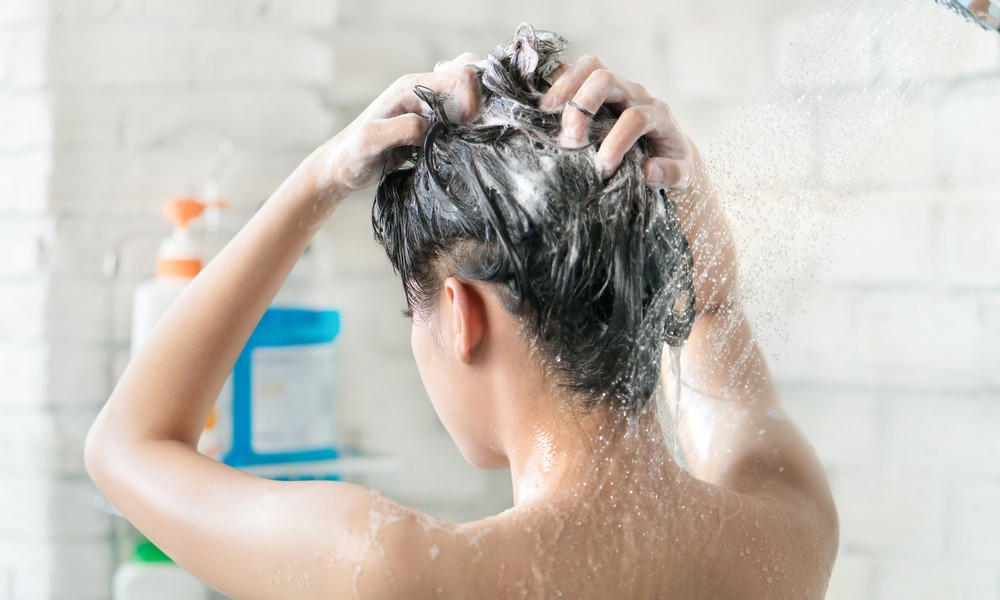When refining your skincare routine, the incorporation of pore strips can be a game-changer for achieving clearer, smoother skin. But the question stands: when is the best time to integrate these nifty tools into your regimen? As any seasoned skincare enthusiast or dermatologist will tell you, proper timing and usage of pore strips can enhance their benefits and prevent potential skin irritations. This article will take a deep dive into the what, how, and when of pore strip usage to help you seamlessly blend them into your skincare routine.
Understanding Pore Strips and Their Purpose

Pore strips are adhesive products designed to remove blackheads and buildup from the skin surface, particularly around the nose. They often contain ingredients that bind to the debris within pores and, upon removal, lift these impurities away. For many, pore strips offer a satisfying and visual result of clearer skin and minimized pore appearance, but understanding their correct use is crucial for long-term skin health.
To appreciate the role of pore strips, it’s vital to grasp their mode of action. When applied to moistened skin, the strip’s adhesive bonds to the top layer of dead skin cells and any sebum or dirt clogging the pores. As it dries, the strip hardens, and when pulled away from the skin, it extracts these substances, potentially reducing the visibility of pores and giving the skin a cleaner look.
The Ideal Place for Pore Strips in Your Daily Routine

Prior to integrating pore strips into your regime, evaluate your skin type. Those with dry or sensitive skin may find these strips too harsh, while oily or combination skin types may benefit more conspicuously from their use. Adjust the frequency of use based on how your skin reacts—more oily skin might be able to handle weekly use, while sensitive types should opt for less frequent applications.
Deciding between a morning or evening slot for pore strips in your routine boils down to personal preference and lifestyle. Evening use is preferable for some, as the skin undergoes its healing and rebuilding processes overnight. Moreover, applying a strip after a day’s accumulation of oils and dirt can provide a satisfying end-of-day cleanse. However, if you find your skin oilier in the mornings, a fresh start with a pore strip may be pleasurable and functional.
Preparing Your Skin for Pore Strip Application
Cleansing before applying a pore strip is non-negotiable. This essential step removes the initial layer of oils, makeup, and dirt that could prevent the strip from adhering effectively. Use a gentle, water-based cleanser to prevent irritation and to prime the skin for the strip.
To Steam or Not to Steam? Enhancing Pore Strip Efficacy
The concept of steaming the face before applying a pore strip is popular, as heat can soften the skin and potentially make clogs easier to remove. If you choose to steam, do so with caution—over-steaming can cause irritation. Here are two ways to prep your skin effectively:
- Gently wash your face with warm water, pat dry, and then apply the pore strip.
- Take a warm, not hot, shower before application, which can help open up the pores naturally.
Step-by-Step: The Right Way to Use Pore Strips
Applying Pore Strips Correctly for Maximum Effectiveness
Getting the most out of your pore strip necessitates correct application. After cleansing and possibly steaming, ensure your nose is wet, press on the strip, smoothing down to close contact with the skin. Wait for the specified amount of time—usually 10-15 minutes—until the strip feels stiff to the touch.
Common Mistakes to Avoid with Pore Strips
Several common errors can compromise the benefits of pore strips and even harm your skin. Avoid these pitfalls to stay safe:
- Applying a pore strip on dry or insufficiently wet skin, which hinders proper adhesion.
- Leaving a pore strip on for longer than recommended, which can lead to over-drying or tearing of the skin.
- Ripping off the strip too quickly, which can cause pain and skin damage; instead, peel it off gently and slowly.
The Post-Pore Strip Care: What to Do After You Peel
Once the strip is removed, inspect the skin for any remaining residue and gently clean the area. Follow up with a non-comedogenic moisturizer to hydrate and soothe the skin. If you removed a significant amount of debris, consider using a toner containing witch hazel or salicylic acid to help tighten the pores temporarily.
Harmonizing Pore Strips with Other Skincare Treatments
Using pore strips in conjunction with other acne treatments can be beneficial, provided you pay attention to the ingredients and your skin’s responses. For example, avoid using retinoids or potent exfoliants on the same day as your pore strips, as this can lead to over-exfoliation and irritation.
Moderation is key when pairing pore strips with exfoliation. Whether you prefer chemical or mechanical exfoliants, make sure to space out their use from your pore strip applications. Over-exfoliating can strip the skin of its natural oils and protection, leaving it vulnerable to further issues.
Pore Strips and Sensitive Skin: Proceed with Caution
Recognizing and respecting your skin’s limits with pore strips is essential. Redness, excessive dryness, or increased sensitivity after using a strip are indications of irritation. In such cases, limit your use of pore strips and consult a dermatologist for personalized advice.
Individuals with sensitive skin should implement pore strips with greater caution, emphasizing less frequent use and selecting strips formulated for sensitive skin. Here’s what sensitive skin users should consider before applying a pore strip:
- Conduct a patch test on a less visible area of your skin to check for reactions.
- Select pore strips with gentler adhesives and hydrating ingredients to minimize irritation.
When to Seek Professional Advice on Using Pore Strips
When pore strips and at-home remedies fail to address your skin concerns, or if you experience adverse reactions, seeking professional help is advised. Dermatologists can provide customized treatment plans and suggest alternatives that may suit your skin better.
It’s important to monitor how your skin reacts over time to pore strips. If you start to notice any negative changes—such as increased breakouts or skin pain—this may be your cue to pause their use and reassess your approach with professional guidance.
Conclusion
Embracing pore strips as part of your skincare arsenal can be highly effective, but timing and proper use are critical. Remember that they are not a one-size-fits-all solution, and the frequency of use will vary depending on individual skin types and concerns. Taking cues from your skin’s condition, and maintaining a balanced approach to your overall skincare routine, will ensure that pore strips remain a beneficial tool rather than a source of irritation. Tailor their use to your unique needs, seek professional advice if necessary, and always prioritize the health of your skin.
FAQs
| Question | Answer |
|---|---|
| How often should I use pore strips? | Use pore strips once a week or less. Overuse can irritate the skin, so monitor your skin’s reaction and adjust accordingly. Sensitive skin types might need to use them even less frequently. |
| Are pore strips suitable for all skin types? | Pore strips are generally suitable for most skin types, but individuals with sensitive or very dry skin should be cautious, as pore strips might cause irritation or skin damage. |
| Can pore strips help with acne? | Pore strips can help remove blackheads, which are a form of comedonal acne. However, they should not be used as a treatment for inflammatory acne such as pimples or cysts. |
| Is it necessary to cleanse the skin before using pore strips? | Yes, it’s crucial to cleanse your skin before using pore strips to remove any oil, makeup, or dirt that could impede the strip’s adhesion. |
| Can using pore strips enlarge my pores? | No, when used correctly, pore strips do not enlarge pores. However, overuse or improper use can cause temporary enlargement, so it is important to follow the instructions and use them sparingly. |



